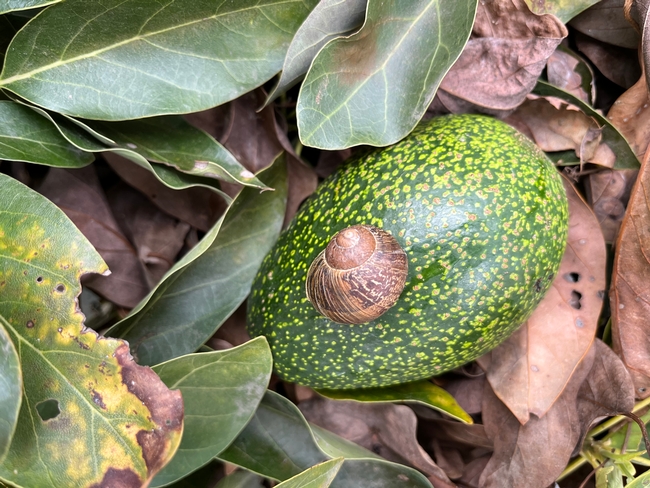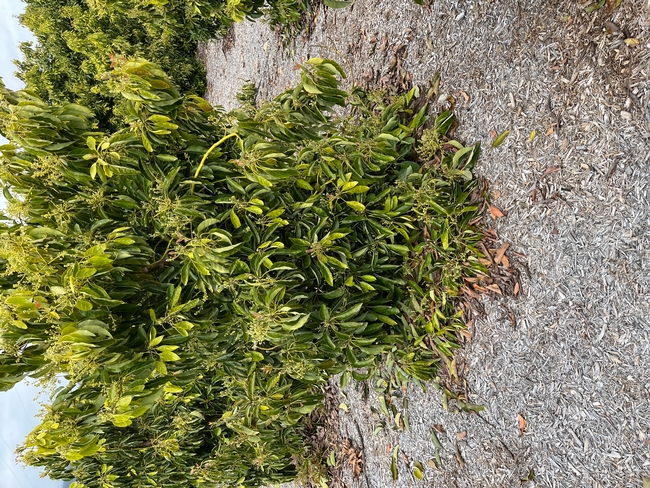You see them here, you see them there, you see those brown garden snails everywhere in the avocado trees this year. A wet year. What do you expect? Lush, beautiful tree growth, yeah. And when you come to harvest the fruit, the leaves and fruit are covered with snails. They are in your hand as soon as you go to pick the fruit.
It's especially noticeable on trees with a tight canopy with poor air circulation and canopy skirts down to the ground. Young GEM trees with their tight canopies and fruit low down and even in the leaf mulch, are especially prone in a wet year like this. We don't normally expect to see snails in avocados. They seem to go for citrus whether it's a wet or a dry year and growers are aware of the need for snail monitoring and control. But avocado growers can get caught off guard.
Snail feeding on fruit
Snails love the closed canopy which is more humid with direct contact to access from soil
So what do you do?
- Inspect young and topworked trees regularly for damage, especially during and after wet conditions. Be sure to distinguish the cause of damage. Caterpillars, earwigs, Fuller rose beetle, grasshoppers, and June beetles also chew tree foliage.
- Inspect surfaces for slimy or dry silvery trails characteristic of snails and slugs. Look for snails hidden under trunk wraps or other shelters near trunks.
- Modify cultural practices, encourage biological control, and exclude snails from canopies to provide good control.
- Prune the skirts up so that they are not touching the ground, but not so high that leaf mulch is blown away.
- Control weeds in young groves and groves where tree canopies are sparse as low vegetation favors snails.
- Retain dropped leaves and apply coarse organic mulch near trunks to retard snail numbers and to suppress root rot and weeds. Frequent microsprinkler irrigation encourages snail problems.
- Increase the interval between irrigations to the extent compatible with good tree growth. Trim branches that touch soil to restrict snail access to canopies and expose the soil surface to drying.
Birds and other small vertebrates, parasitic flies, and several types of predatory beetles commonly prey on snails. The predatory decollate snail (Rumina decollata, family Subulinidae) is widely distributed in southern California. Decollate snail is commercially available and legal for introduction only in certain San Joaquin Valley and southern California counties (Fresno, Imperial, Kern, Los Angeles, Madera, Orange, Riverside, Santa Barbara, San Bernardino, San Diego, Ventura, and Tulare counties). Decollate introductions are not recommended in avocado. Establishment of significant decollate numbers usually requires several years after introduction, and brown garden snail primarily is a pest when avocado trees are young.
Snails and slugs are repelled by copper. Commercially available bands of copper foil wrapped around trunks exclude snails. Another alternative is to add Bordeaux mixture to whitewash and paint 1 to 2 inch strip around the trunks of trees. Certain snail baits are available for spot applications. Molluscicides also kill predatory decollate snails. Pesticides are rarely warranted for mollusk control in avocado.
Read more at UC IPM
https://ipm.ucanr.edu/agriculture/avocado/brown-garden-snail/#gsc.tab=0



